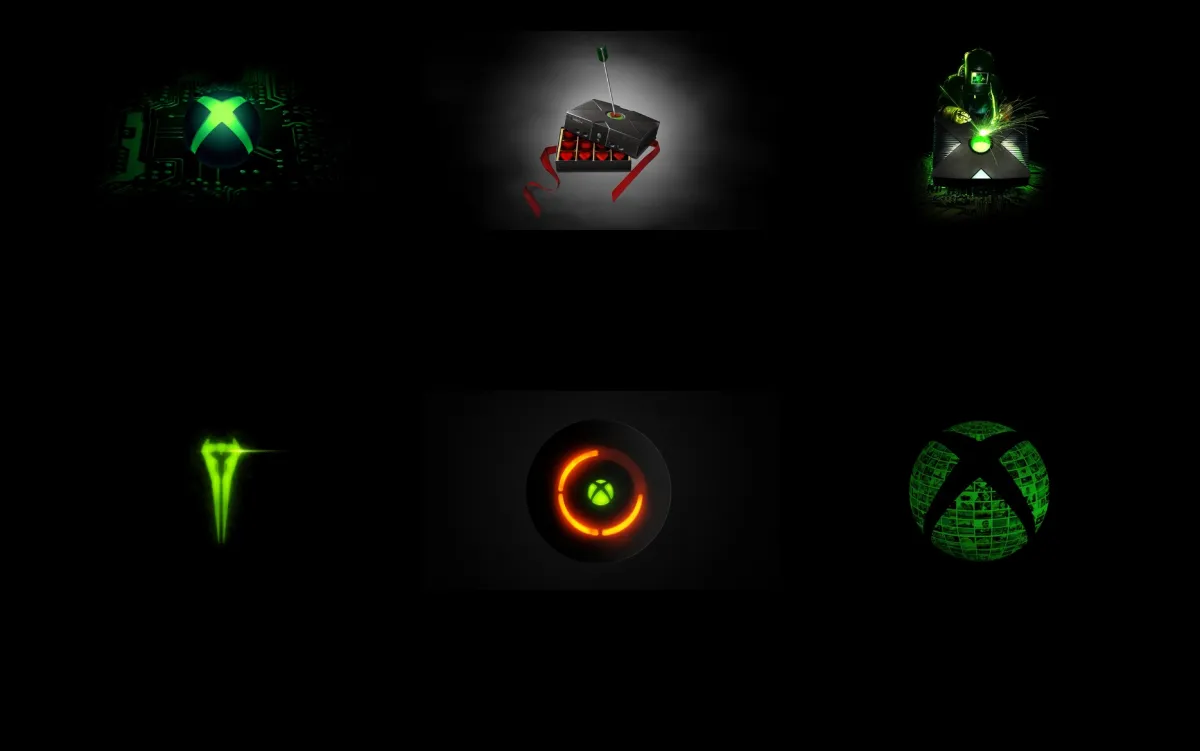Looking a gift horse in the mouth
The fatal flaw of Kinect games is that they are built on a foundation of lies.
You are the controller — except most games control much of the action themselves to make up for the lack of input. It’s more immersive — except the waving of your arms at nothing just makes you feel incredibly self-conscious and alienated. It’s intuitive — except the lack of tactile feedback and inherent imprecision of the input makes it far more unwieldy than button-based games. It’s always better with Kinect — except it never, ever is.
What happens when you combine the Kinect’s inherent aura of lies with Lionhead Studios, a company famous for not exactly “agreeing” with reality? First of all, you get told that Fable: The Journey is not “on-rails.”
It’s on-rails.

Fable: The Journey (Kinect)
Developer: Lionhead Studios
Publisher: Microsoft Game Studios
Release: October 9, 2012
MSRP: $49.99
Fable: The Journey is the story of one man falling in romantic love with his horse. That is, at least, the impression I get of the relationship between protagonist Gabriel and the equestrian companion we spend most of our time with. There’s some incidental storyline involving an ancient evil and Gabriel’s heroic destiny, but the most pressing concern is clearly how much Gabriel wants to take that horse out to dinner.
In fairness, The Journey does retain some classic Fable charm, with lighthearted humor and silly characters, as well as the usual labored attempts to convince us we really do care about our pretend animal friend. It would have been easy for Lionhead to skimp entirely on the narrative and atmospheric aspect of the series for such a one-trick spin-off, but it has to be said that some effort was put into the writing and the retention of an environment in keeping with the series.
Effort, in fact, has been put into everything. Let it never be said that Fable: The Journey is the product of rushed development or a lack of attention. The graphics are relatively pretty, there’s a simple but decent little upgrade system, and altogether it’s evident that Lionhead worked hard on this latest Fable adventure. That does not mean, however, that it’s good. Far from it. As much as Lionhead may have tried its level best, the limitations of Kinect ensure, at every step, that The Journey is boring when it works and tear-inducing when it doesn’t.
Gameplay is split into roughly two distinct sequences – on-rails horse-and-cart stages and on-rails shooter stages. Typically, Gabriel will ride his horse, Seren, to a village or other area of interest, at which point he’ll leave the cart for whatever contrived reason and blast at enemies using the magic gauntlets he acquires early in the adventure. Both sequences are in the first-person, with Gabriel and Seren’s movements controlled automatically, though the player has some small measure of restricted locomotive control.
Horseback sections are viewed from within the cart, Gabriel holding the reins as Seren pulls him forward. To spur Seren between one of three speeds, the player must crack their arms up and down swiftly. Seren can also be slowed by drawing one’s hands to the chest, or stopped suddenly by raising them above the head. By pulling one hand back and pushing the other forward, Seren can also be steered left or right in order to avoid obstacles or pick up experience orbs — saved for use on a rudimentary skill tree that boosts health, improves the horse, or makes magic more efficient.
For the most part, Fable‘s horse riding sections surprise due to the fact that they actually work fairly well. Acceleration and steering are relatively responsive, though Seren’s turns are a little unwieldy, tending to start slowly before suddenly curving. Though Seren will invariably end up smashing into something or missing orbs due to the unpredictability of the steering, at least I felt like the game always understood what I wanted it to do, something that so many motion-controlled games fail at. In this one area, The Journey stands head and shoulders above many others.

The only major problem is this — riding a horse is boring, even when the game tries to gussy it up with fast-paced chase sequences or roadside distractions. No matter how often it tries to convince you it’s exciting, carriage gameplay still just amounts to the player sat there, intermittently pushing and pulling imaginary reins. So slow are these sections that the game even frequently reminds you that you can just stop playing, put your arms down, and watch Seren do most of the work herself.
Combat sequences are dramatically less savory, and make one pray for the whole game to remain a dull roadtrip. Making many of the mistakes Sorcery did, The Journey‘s biggest failing is that guesswork is the primary mode of battle, since there’s no targeting reticule and you’re supposed to intuitively know where you’ll be flinging your energy bolts. In theory, the idea of waving your arm and smashing stuff with magic balls is a great idea, but it can never quite work in practice. In any ideal playing situation, the Kinect isn’t eye level, and thus can’t provide a true 1:1 experience, not without it being suspended in the air directly in front of the television screen. As such, you’re expected to just feel it out. If an enemy’s approaching from the left, you throw your arm toward the left several times and hope you hit it.
With time, you’ll eventually get a vague idea of where to thrust your limbs, but it’ll never be perfect, and so projectiles will frequently miss — especially when the merest twitch can make the difference of several meters in-game. For what it’s worth, Gabriel has two magic spells — a telekinetic “grab” move, bound to the left hand, and an offensive magic bolt bound to the right. With the left hand, players can latch onto enemies or objects and move them by swiping in the desired direction. With the right, players send out damaging attacks, and can later upgrade to fireballs by either waving the hand quickly or shouting “Fireball” at the Kinect. These spells can also change course in mid-air with a swipe of the hand — theoretically, anyway. It rarely works in practice.

Gabriel can defend himself from melee and ranged attacks with the counter spell, a shield that is activated by drawing one’s left arm up towards the body. This is the real pisser, since it seems to work on a totally arbitrary basis. Sometimes it’ll activate without you actually doing anything, other times it won’t work no matter how hard you try, even when it’s really needed. The nature of the input is such that the game just can’t efficiently tell if you’re launching a grab spell or trying to shield, so it just decides for you.
Even if it worked perfectly, however, that wouldn’t alter the fact that you’re just playing a very, very poor version of House of the Dead. I like a good lightgun shooter, but “good” does not describe this spell-slinging trot through mundanity. Enemies are sparse and predictable, player attacks little more than just the same two spells spammed over and over. When playing a motion game, I find it a good mental exercise to imagine it played with a traditional controller or gun-like peripheral, and ask whether it would be acceptable by the standards of similar games — after all, the gimmicky nature of the input shouldn’t be an excuse for inadequate gameplay. No matter how The Journey would be controlled, it’d be vacuous to a mind-numbing degree.
Vacuous and, of course, not very comfortable. Being expected to repetitively thrust one’s arms back and forth is wearisome work, and if you think it’s just because I’m fat, do bear in mind I’m also an habitual masturbator — my arms are used to a good workout. The simple fact is that the game, designed as it is to be played sat down, is a pain to play — not least during moments when projectile commands just won’t respond and you’re forced to literally whip your arm forward to get the thing to recognize you. There’s a reason why both the Xbox 360 and the game frequently remind you to rest your arms during the quieter on-rails sections. It knows how uncomfortable it is, and it doesn’t care. Why should it care? Player comfort never matters when making tech demos for technology that’s several years old!

Yes, the “old tech demo” atmosphere that surrounds most Kinect and PlayStation Move games is here in full force, exemplified during moments of downtime where Gabriel comes to a rest stop. At rest stops, the player is made to perform all kinds of mime artistry, from healing wounds to pumping water to tugging on light switches to opening chests. Pretend to brush dirt off a horse, or why not pull an apple from a tree and hold it out for her? Naturally, any pretense of being a videogame is dropped for these sections, as the player performs banal gesture after banal gesture, in no way feeling like the entertainment value is being enhanced. You’re not supposed to be entertained in these sections. You’re supposed to be impressed by performing the same pantomimes you’ve been performing on this machine since 2010. Needless to say, only somebody with the memory retention of a goldfish could be impressed — and even then, “impressed” may be too strong a word for it.
Every now and then, things may be spiced up with a very minor spin on the formula, but the intensity of any such changes are usually a case of smoke-and-mirrors. For instance, one level sees Gabriel trapped in a minecart as it speeds through a cavern, Hobbes launching a volley of missiles at him. For experimentation’s sake, I put my hands down and watched to see if any of the considerable enemy fire would hit me. Gabriel got through the entire section unscathed, without me having to move a muscle. It really is difficult to understand how Peter Molyneux ever had the gall to say directly to peoples’ faces that this thing wasn’t on rails.

I’ll confess to not seeing The Journey through to its ultimate conclusion for, after one failed counter spell too many, an unplanned event happened that saw the disc find its way into my hand — whereby it took on a new, bendier shape and became unreadable by the Xbox. However, my elbows are thankful for the respite and, given that the hours already spent in Albion hadn’t changed one iota since the adventure began, I’m confident in the knowledge that nothing of value was lost. Nothing can change the fact that, in its very best moments, The Journey is stale, and at its worst, it inspires the player to try and crush the disc with arms rendered too weary to crush an egg.
As I said early in the review, Lionhead did try. However, it tried to accomplish the wrong things. It didn’t try to make the game enjoyable for the player, nor did it try and make things engaging or fun. It tried to show off to the audience, to make them think what they were seeing was clever, rather than entertaining. The Journey is a child screaming at its parents to watch as it does a handstand, blissfully unaware that the adults are only feigning interest as the uncoordinated minor repeatedly falls to the ground and tries again, before managing maybe three or four seconds of stability.
In other words, it’s yet another motion control game masquerading as something adventurous and bold, but frequently exposing itself for the shallow, monotonous, borderline broken experience it actually is. While some elements of Fable: The Journey really do work, and no effort has been spared to make this look and feel like a quality product, the reality is that no amount of polish can hide the inherent faultiness of the end result. The Journey wants so desperately to impress you, but it can only ever ruin your day.
And it’s on-rails.





